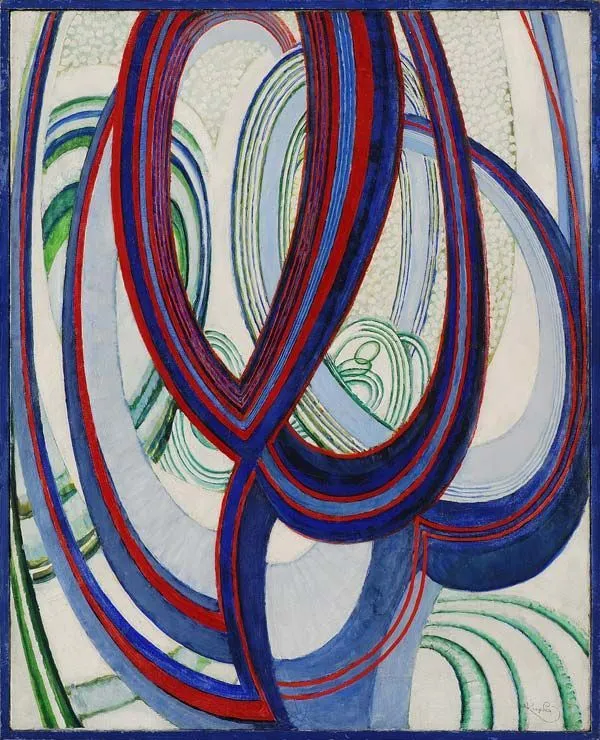LETTER I
By:
March 11, 2024
A series dedicated to poems, published c. 1900–1935, the Radium Age sf-adjacent themes of which include: dystopia and utopia, far-out mathematics and the fourth dimension, Afro-futurism, catastrophe, future war, new technologies, scientific breakthrough, dehumanization, cosmic awe, disenchantment and unseen forces, unknowable aliens and singularity. Research and selection by Joshua Glenn; thematic index here.

You were amused to find you too could
fear
“The eternal silence of the infinite spaces”
That net-work without fish, that mere
Extended idleness, those pointless places
Who, being possiblized to bear faces,
Yours and the light from it, up-buoyed,
Even of the galaxies are void.
I approve, myself, dark spaces between
stars;
All privacy’s their gift; they carry glances
Through gulfs; and as for messages (thus
Mars’
Reknown for wisdom their wise tact
enhances,
Hanged on the thread of radio advances)
For messages, they are a wise go-between,
And say what they think common-sense
has seen.
Only, have we space, common-sense in
common,
A tribe whose life-blood is our sacrament,
Physics or metaphysics for your showman,
For my physician in this banishment?
Too non-Euclidean predicament.
Where is that darkness that gives light its
place?
Or where such darkness as would hide
your face?
Our jovial sun, if he avoids exploding
(These times are critical), will cease to grin,
Will lose your circumambient foreboding;
Loose the full radiance his mass can win
While packed with mass holds all that
radiance in;
Flame far too hot not to seem utter cold
And hide a tumult never to be told.
— Written 1928–1935, when Empson was a student at Cambridge. (But was it first published after the Radium Age era?) This is “letter” 1 (I) of 6.
Need to get my hands on Empson’s Poems (1935).
Empson’s metaphysical love poems tested out the universe of Einstein and Eddington to see what resources it might offer adventurous lovers in an age of relativity. “Letter I,” one reads, for example in Katy Price’s essay “Flame far too hot: William Empson’s non-Euclidean predicament,” appears to anticipate the black hole, using the idea of a dying star from which no light escapes as a metaphor for unrequited passion. “Empson’s attempt to follow the metaphysical example of John Donne, using the new cosmology of the 1920s, led him to explore an extreme astrophysical condition that Eddington had dismissed as absurd, and that still had an uncertain scientific status in the 1930s.”
In the essay “Empson in the Small Hours” we read that the poem’s speaker is trying to persuade his interlocutor that the “dark spaces between stars” are a fine way to maintain equilibrium by allowing each person to operate using a common-sense interpretation of the other’s behaviour. Life in space is harsh, however, and the poem plunges immediately into a Cornford-induced despair about the two of them not having any shared “common-sense”: the speaker finds himself in an excessively “non-Euclidean predicament,” being cut off from the rest of space by extreme gravitational curvature.
“All six of the poems entitled ‘Letter’ (that is, ‘Letter I’ through ‘Letter VI’), each addressed to the same unavailable man, take as one of their recurrent topics the impossibility of stable, shared, reliable, and fully honest communication between even the writer and his one reader (let alone any larger putative audience).” — Stephanie Burt, “Empson and the Censor,” Modern Philology (February 2010).
RADIUM AGE PROTO-SF POETRY: Stephen Spender’s THE PYLONS | George Sterling’s THE TESTIMONY OF THE SUNS | Archibald MacLeish’s EINSTEIN | Thomas Thornely’s THE ATOM | C.S. Lewis’s DYMER | Stephen Vincent Benét’s METROPOLITAN NIGHTMARE | Robert Frost’s FIRE AND ICE | Aldous Huxley’s FIFTH PHILOSOPHER’S SONG | Sara Teasdale’s “THERE WILL COME SOFT RAINS” | Edith Södergran’s ON FOOT I HAD TO… | Robert Graves’s WELSH INCIDENT | Nancy Cunard’s ZEPPELINS | D.H. Lawrence’s WELLSIAN FUTURES | & many more.
